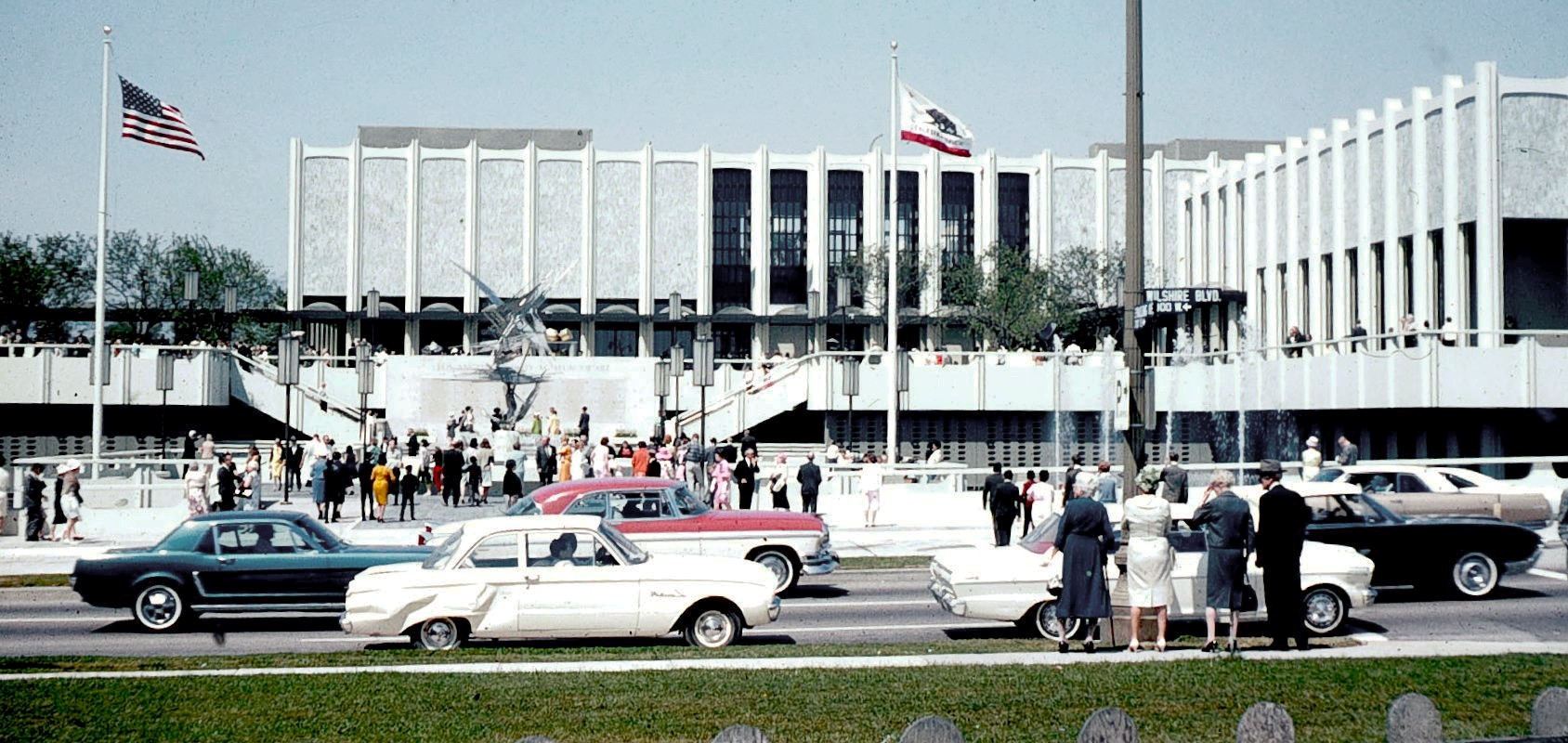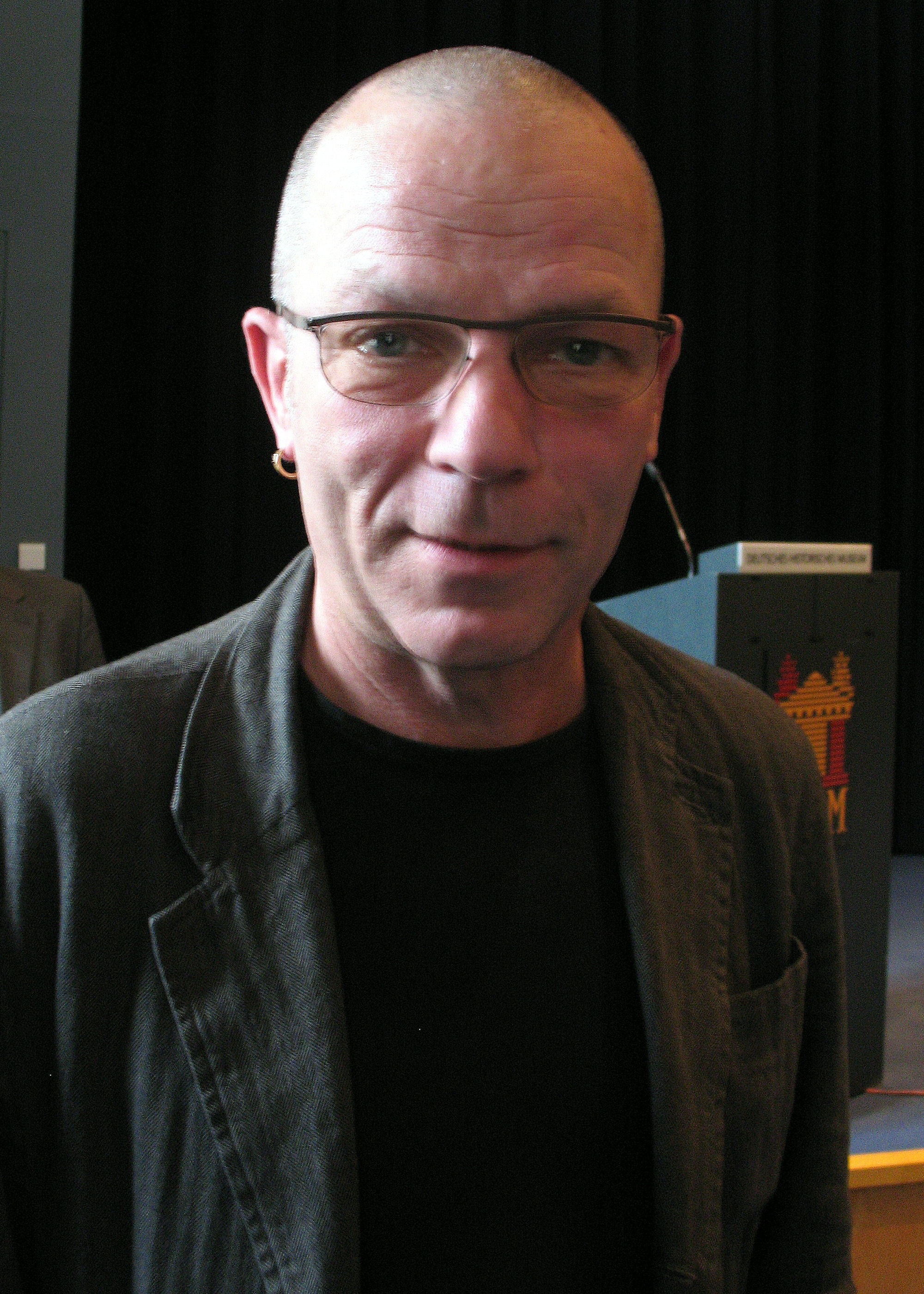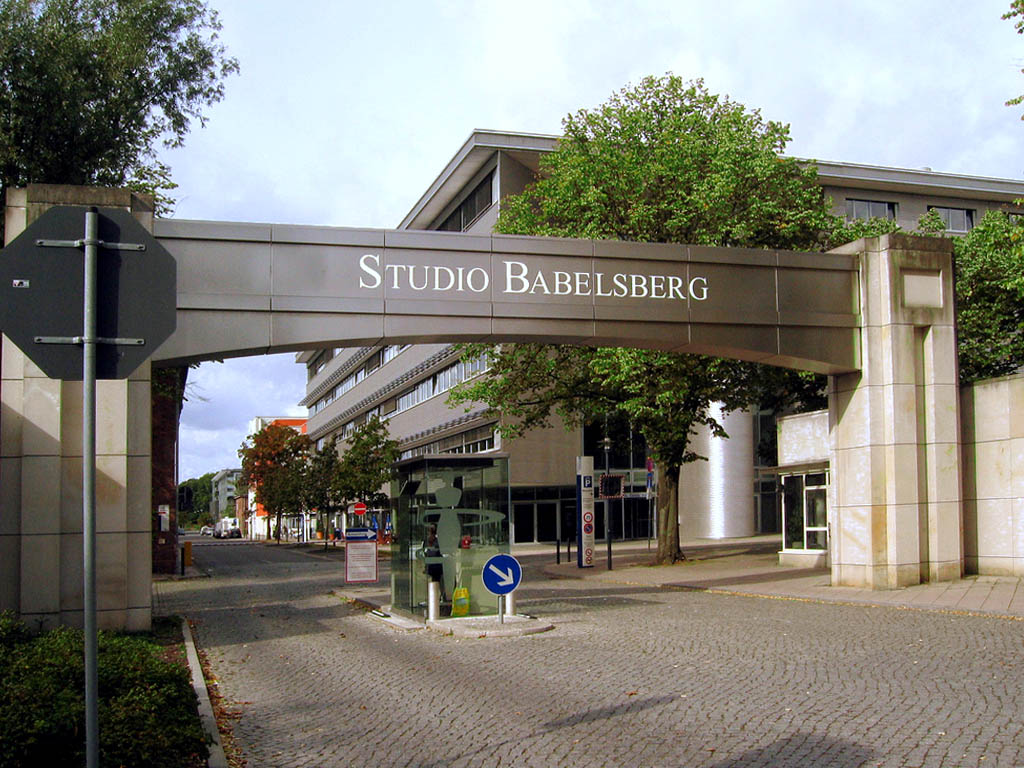|
DEFA Film Library
The DEFA Film Library at the University of Massachusetts Amherst is the only research center and archive outside of Germany devoted to a broad spectrum of filmmaking from and related to the former German Democratic Republic (GDR, East Germany). Researchers are welcome to the archive by pre-arranging their visit. The DEFA Film Library’s mission is twofold: to make East German films available and better known outside of Germany, and to broaden the understanding of filmmaking in the GDR and Eastern and Central Europe through critical interdisciplinary and transnational scholarship. In order to achieve this mission, the nonprofit organization mounts a multi-tiered effort. Through preservation, research initiatives, production, and cultural programming, the DEFA Film Library: * houses an extensive archive and collection of 35- and 16-mm prints, DCPs, DVDs, film files, books, periodicals, documents and images; * creates high-quality English-subtitled East German films in various fo ... [...More Info...] [...Related Items...] OR: [Wikipedia] [Google] [Baidu] |
DEFA Film Library UMass Logo
DEFA (''Deutsche Film-Aktiengesellschaft'') was the state-owned film studio of the German Democratic Republic (East Germany) throughout the country's existence. Since 2019, DEFA's film heritage has been made accessible and licensable on the PROGRESS archive platform. History DEFA was founded in Spring 1946 in the Soviet Occupied Zone in eastern Germany; it was the first film production company in post-World War II Germany. While the other Allies, in their zones of occupation, viewed a rapid revival of a German film industry with suspicion, the Soviets valued the medium as a primary means of re-educating the German populace as it emerged from twelve years of Nazi rule. Headquartered in Berlin, the company was formally authorized by the Soviet Military Administration to produce films on 13 May 1946, although Wolfgang Staudte had already begun work on DEFA's first film, ''Die Mörder sind unter uns'' (''The Murderers Are Among Us'') nine days earlier. The original board of dir ... [...More Info...] [...Related Items...] OR: [Wikipedia] [Google] [Baidu] |
Los Angeles County Museum Of Art
The Los Angeles County Museum of Art (LACMA) is an art museum located on Wilshire Boulevard in the Miracle Mile, Los Angeles, California, Miracle Mile vicinity of Los Angeles. LACMA is on Museum Row, adjacent to the La Brea Tar Pits (George C. Page Museum). LACMA was founded in 1961, splitting from the Los Angeles Museum of History, Science and Art. Four years later, it moved to the Wilshire Boulevard complex designed by William Pereira. The museum's wealth and collections grew in the 1980s, and it added several buildings beginning in that decade and continuing in subsequent decades. In 2020, four buildings on the campus were demolished to make way for a reconstructed facility designed by Peter Zumthor. His design drew strong community opposition and was lambasted by architectural critics and museum curators, who objected to its reduced gallery space, poor design, and exorbitant costs. LACMA is the list of largest art museums, largest art museum in the western United States. It a ... [...More Info...] [...Related Items...] OR: [Wikipedia] [Google] [Baidu] |
Lothar Warneke
Lothar Warneke (15 September 1936 – 5 June 2005) was a German film director, screenwriter and actor. His 1977 film ''The Incorrigible Barbara'' was entered into the 10th Moscow International Film Festival. His 1981 film '' Our Short Life'' was entered into the 12th Moscow International Film Festival. In 1982 his film '' Apprehension'' was entered into the main competition at the 39th edition of the Venice Film Festival.Stefano Reggiani. "Ecco i film che a Venezia si contendono i Leoni d'oro". '' La Stampa'' (183). 28 July 1982. In 1986 his film ''Blonder Tango'' won both the Grand Prix and the Findling Award of the 4th National Feature Film Festival of the GDR. In 1988 he again won the Findling Award, this time for his ''Einer trage des anderen Last''. His 1988 film ''Bear Ye One Another's Burden'' was entered into the 38th Berlin International Film Festival, where co-stars Manfred Möck and Jörg Pose won the Silver Bear for Best Actor. Selected filmography * '' Dr. ... [...More Info...] [...Related Items...] OR: [Wikipedia] [Google] [Baidu] |
Thomas Heise
Thomas Heise (born August 22, 1955 in East Berlin), is a German documentary filmmaker. Life and work Heise is the son of philosophy professor Wolfgang Heise. He was a printer's apprentice between 1971 and 1973. After a year in the National People's Army, Thomas Heise worked as a director's assistant between 1975 and 1978 in East Germany's DEFA Film Studios, finishing his final exams at night school. In 1978 he studied to be a director at the Konrad Wolf Hochschule für Film und Fernsehen. Following his first film, "Why make a film about these people" (Wozu denn über diese Leute einen Film?), about the culture of East Berlin before the wall came down, he broke off his studies, and began to work as a freelance writer and director. All of his early documentary films were banned or prohibited from screening by the East German government, as well as his radio pieces. In December 1989, 4 weeks after the fall of the Berlin wall, his radio piece ''Widerstand und Anpassung - Überlebenss ... [...More Info...] [...Related Items...] OR: [Wikipedia] [Google] [Baidu] |
Egon Günther
Egon Günther (30 March 1927 – 31 August 2017) in: , 31 August 2017. was a German film director and writer. His film '' Lotte in Weimar'' was nominated for the at the 1975 Cannes Film Festival. In 1985, his film '' Mo ... [...More Info...] [...Related Items...] OR: [Wikipedia] [Google] [Baidu] |
Rainer Simon
Rainer Simon (born 11 January 1941) is a German film director and screenwriter. He directed 17 films between 1964 and 2000. His '' How to Marry a King'' (1969) and ''Six Make it Through the World'' (1972) are highly imaginative adaptations of fairy tales by the Grimm Brothers. His 1975 ''Till Eulenspiegel'' is based on Renaissance stories, which Christa and Gerhard Wolf recast into a film narration incorporating period history. His 1985 film '' The Woman and the Stranger'' won the Golden Bear award at the 35th Berlin International Film Festival. His 1980 film ''Jadup and Boel'' entered into the 16th Moscow International Film Festival in 1989. Selected filmography * '' How to Marry a King'' (1969) * ''Six Make It Through the World'' (1972) * ''Till Eulenspiegel'' (1975) — film about Till Eulenspiegel (18+) * ''Jadup and Boel'' (1980) * ' (1983) — based on a novel by Fritz Rudolf Fries * '' The Woman and the Stranger'' (1985) — based on a novella by Leonhard Frank * ' ( ... [...More Info...] [...Related Items...] OR: [Wikipedia] [Google] [Baidu] |
Frank Beyer
Frank Paul Beyer (; 26 May 1932 – 1 October 2006) was a German film director. In East Germany he was one of the most important film directors, working for the state film monopoly DEFA and directed films that dealt mostly with the Nazi era and contemporary East Germany. His film ''Trace of Stones'' was banned for 20 years in 1966 by the ruling SED. His 1975 film '' Jacob the Liar'' was the only East German film ever nominated for an Academy Award. After the fall of the Berlin Wall in 1989 until his death he mostly directed television films. Biography Early life and career Frank Beyer was born as Frank Paul Beyer in Nobitz in Thuringia, Germany, to Paul Beyer, a clerk, and Charlotte Beyer, a sales clerk. He had a brother, Hermann Beyer (born 30 May 1943) who should have become a successful actor. After the Machtergreifung of the Nazi Party in 1933 his father, a social democrat lost his job and was unemployed for several years. In 1942 he was drafted for military service and ... [...More Info...] [...Related Items...] OR: [Wikipedia] [Google] [Baidu] |
Potsdam-Babelsberg
Babelsberg () is the largest quarter (''Stadtteil'') of Potsdam, the capital city of the German state of Brandenburg. The affluent neighbourhood named after a small hill on the Havel river is famous for Babelsberg Palace and Park, part of the Palaces and Parks of Potsdam and Berlin UNESCO World Heritage Site, as well as for Babelsberg Studio, a historical centre of the German film industry and the first large-scale movie studio in the world. History A settlement on the small Nuthe creek was first mentioned in the 1375 ''Landbuch'' (domesday book) by Emperor Charles IV of Luxembourg, who also ruled as Margrave of Brandenburg since 1373. Then called ''Neuendorf'' (New Village) after its former West Slavic name ''Nova Ves'', it was shelled several times and was severely damaged during the Thirty Years' War. In the mid-18th century the new village of Nowawes was founded by King Frederick II of Prussia and settled with Protestant Bohemian deportees, predominantly weavers who as de ... [...More Info...] [...Related Items...] OR: [Wikipedia] [Google] [Baidu] |
UCLA
The University of California, Los Angeles (UCLA) is a public land-grant research university in Los Angeles, California. UCLA's academic roots were established in 1881 as a teachers college then known as the southern branch of the California State Normal School (now San José State University). This school was absorbed with the official founding of UCLA as the Southern Branch of the University of California in 1919, making it the second-oldest of the 10-campus University of California system (after UC Berkeley). UCLA offers 337 undergraduate and graduate degree programs in a wide range of disciplines, enrolling about 31,600 undergraduate and 14,300 graduate and professional students. UCLA received 174,914 undergraduate applications for Fall 2022, including transfers, making the school the most applied-to university in the United States. The university is organized into the College of Letters and Science and 12 professional schools. Six of the schools offer undergraduate degre ... [...More Info...] [...Related Items...] OR: [Wikipedia] [Google] [Baidu] |
Wende Museum
The Wende Museum is an art museum, historical archive of the Cold War, and center for creative community engagement in Culver City, California. Mission ''Wende'' (pronounced “venda”) is a German word that translates into English as “transformation.” It commonly refers to the era of uncertainty and possibility leading up to and following the fall of the Berlin Wall in 1989 and the subsequent dissolution of the Soviet Union in 1991. Embracing a spirit of continual transformation as part of its mission, the Wende aspires to reach beyond the conventional walls of a museum, placing equal value on international scholarship, community engagement, digital access, and wide-ranging experimentation. Founded in 2002, the Wende Museum holds one of the largest collections of art and artifacts from the Cold War era, which serves as a foundation for programs that illuminate political and cultural changes of the past, offer opportunities to make sense of a changing present, and ... [...More Info...] [...Related Items...] OR: [Wikipedia] [Google] [Baidu] |
Goethe-Institut
The Goethe-Institut (, GI, en, Goethe Institute) is a non-profit German cultural association operational worldwide with 159 institutes, promoting the study of the German language abroad and encouraging international cultural exchange and relations. Around 246,000 people take part in these German courses per year. The Goethe-Institut fosters knowledge about Germany by providing information on German culture, society and politics. This includes the exchange of films, music, theatre, and literature. Goethe cultural societies, reading rooms, and examination and language centres have played a role in the cultural and educational policies of Germany for more than 60 years. It is named after German poet and statesman Johann Wolfgang von Goethe. The Goethe-Institut e.V. is autonomous and politically independent. Partners of the institute and its centres are public and private cultural institutions, the German federal states, local authorities and the world of commerce. Much of ... [...More Info...] [...Related Items...] OR: [Wikipedia] [Google] [Baidu] |
Real Art Ways
Real Art Ways is a non-profit art space established in 1975. Located at 56 Arbor Street in the Parkville neighborhood of Hartford, Connecticut, Real Art Ways exhibits visual art, houses an independent cinema and presents live music, theater, and literary and community events. It has shown such artists as Sol LeWitt, Pepon Osorio, Jenny Holzer, Cindy Sherman, Robert Longo, David Salle, Roxy Paine, and Louise Bourgeois. Real Art Ways has also hosted notable performances by John Cage, Philip Glass, Ornette Coleman, Steve Reich, Laurie Anderson, Allen Ginsberg and others. The cinema at Real Art Ways regularly wins Best Art Cinema in the ''Hartford Advocates annual Best of Hartford awards. History Real Art Ways was founded in 1975 by artists Ruth Cutler, Dan R. Talley, Al Baccili, Joseph Celli and Stan Sharshal. In 1982, Real Art Ways (R.A.W.) sued the comics magazine '' RAW'' over its name. Public Art Real Art Ways has presented a number of public art projects in Hart ... [...More Info...] [...Related Items...] OR: [Wikipedia] [Google] [Baidu] |






